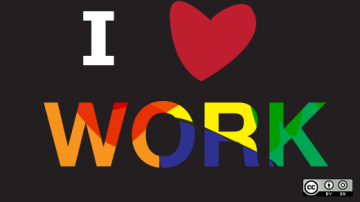"Says easy, does hard." That's a Southern expression I've really grown to appreciate. And it's especially relevant this time of year, when people are making their 2019 resolutions. Change of any kind—either personal or organizational—can be easy to conceptualize in the abstract. But making that change, actually doing the work of changing, is much more difficult.
I received an unexpected reminder of this recently during an annual meet-up with a group of friends from business school. One of the friends arrived looking dramatically more in shape than the last time we'd played together, and everyone in our group was astounded. "How did you do it?" we all asked him. "What's the secret?"
Being a man of few words, my friend just shrugged and said: "Eat less. Exercise more."
Eat less. Exercise more. What a brilliantly simple formula. You'll likely read plenty of dieting advice this season, but, in the end, you can reduce most of it just to those four words. As far as explanations go, it's about as straightforward and uncomplicated as anything could be. Says easy.
So why do so many people struggle to maintain their weight loss efforts?
Because understanding what needs to change is only part of the process of change. The next part, actually implementing and sustaining change, often involves breaking deeply ingrained habits, making difficult decisions, facing painful truths, and reflecting on goals and commitments. Does hard.
For every diet book on shelves right now, there's a book about organizational innovation and leadership change sitting just one aisle over. Those books promise to reveal hidden keys to organizational agility and associate engagement. In the end, however, their messages are also reducible to a fairly predictable formula: Engage more, dictate less.
Many forward-thinking pundits and management experts seem to agree that innovation today requires leaders willing to give up some control, push decision-making power to the people working more closely on customer problems, and spark an intrinsic sense of purpose to guide success (rather than attempt to drive performance through edicts and top-down commands).
So why aren't more people doing that?
Understanding intellectually the principles of organizational culture change and leadership transformation can be pretty easy. But enacting them practically is an entirely different story.
I think that's true for two reasons.
First, any kind of change requires breaking habits, and habits can get so ingrained that they become a kind of "default" setting that blinds us to other ways of working. I'm thinking of the CEOs who gather their direct reports in a room and unilaterally demand they start thinking and acting more inclusively and collaboratively, failing to realize that they need to start working this way first. Issuing a command to "be more collaborative" is a bit of an oxymoron, but this is the way most leaders have always solved problems, so why should they think differently? (It's sort of like browsing workout plans while sipping that extra large, sugared coffee drink many of us buy every morning, which, let's be honest, is more like a milkshake than anything else.) Habits can lure us into a comfortable state of paralysis if we aren't careful.
Second, organizational culture change almost always necessitates short-term discomfort in the service of long-term gain. Much like dieting, it requires resisting the all-too-powerful temptation of instant gratification. Becoming a more open, inclusive, and meritocratic leader requires hard work that, let's face it, might not always seem appealing. Listening to ideas from across the organization, hearing that our plans might not be as great as we once thought, having our minds changed (and changed again)—it's all difficult and tiring work. So we delay it. Faced with a list of ten priorities we need to accomplish quickly, we convince ourselves that we simply can't extend the effort to be more open right now. We fall back on command-and-control leadership techniques to drive change quickly (the managerial equivalent of flopping back on the couch and having one more piece of cake "just this once"). We tell ourselves we'll be more open next time. And then, when next time comes, we do the same things.
I'm not suggesting that reading books on organizational innovation—like reading diet books—isn't helpful. Every day, we learn more about the way organizations function, about what works and what doesn't, and about how our once-incontrovertible assumptions are actually incorrect. Intellectual developments in fields like behavioral economics help us make better informed decisions about how to construct and run organizations, just as new research in human physiology helps us draft better diet and exercise plans.
But then we need to appreciate the complexity those fields offer us, avoid overly simplified explanations of what's ailing us, and get started on the path to change with honesty and conviction.
So if you want to be healthier this year, eat less and exercise more. If you want your organization to be more agile this year, dictate less and engage more. But remember: Neither diet fads nor innovation fads will be enough to help us become lighter in 2019.







Comments are closed.